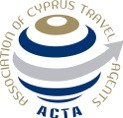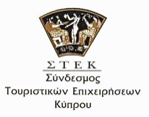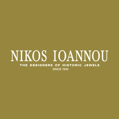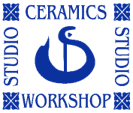 Inspired by our past to help shape your future. With 50 years of academic excellence behind us as a university, we have continued to grow our international reputation and course provision. We have always been pioneers in developing new course subjects, reflecting and anticipating the needs of employers, our students, and of society as a whole. Bradford was the first university outside London to offer part-time degree courses, and our courses are designed in response to the changing business, social, scientific and environmental landscape. The University of Bradford uniquely integrates Archaeological Sciences, Biological Anthropology and Forensic Sciences and shares an interest in the study of people and their environments in the present and the past. Our approach is profoundly multidisciplinary, bridging the sciences and the humanities. Our teaching is led by research and practice. The breadth and depth of staff expertise informs an approach that combines formal, up-to-date instruction with extensive hands-on experience in the laboratory and in fieldwork. We specialise in the application of isotopic tools to address questions in archaeological, anthropological, environmental, palaeodietary, climate and forensic research. We have a well-equipped laboratory, capable of analysing the stable isotopes of hydrogen, carbon, nitrogen, oxygen and sulphur from most organic and inorganic materials. We are experienced in the preparation and analysis of bone, dentine, hair and other organic residues; tooth enamel and other biocarbonate minerals, and inorganic carbonates; plants and sediments. Additionally we are equipped to sample and perform high-resolution analyses of incremental tissues including hair, nail, teeth, and shell and cave carbonates. The stable light isotopes laboratories are housed in the Analytical Centre, and managed by the School of Archaeological Sciences.
Inspired by our past to help shape your future. With 50 years of academic excellence behind us as a university, we have continued to grow our international reputation and course provision. We have always been pioneers in developing new course subjects, reflecting and anticipating the needs of employers, our students, and of society as a whole. Bradford was the first university outside London to offer part-time degree courses, and our courses are designed in response to the changing business, social, scientific and environmental landscape. The University of Bradford uniquely integrates Archaeological Sciences, Biological Anthropology and Forensic Sciences and shares an interest in the study of people and their environments in the present and the past. Our approach is profoundly multidisciplinary, bridging the sciences and the humanities. Our teaching is led by research and practice. The breadth and depth of staff expertise informs an approach that combines formal, up-to-date instruction with extensive hands-on experience in the laboratory and in fieldwork. We specialise in the application of isotopic tools to address questions in archaeological, anthropological, environmental, palaeodietary, climate and forensic research. We have a well-equipped laboratory, capable of analysing the stable isotopes of hydrogen, carbon, nitrogen, oxygen and sulphur from most organic and inorganic materials. We are experienced in the preparation and analysis of bone, dentine, hair and other organic residues; tooth enamel and other biocarbonate minerals, and inorganic carbonates; plants and sediments. Additionally we are equipped to sample and perform high-resolution analyses of incremental tissues including hair, nail, teeth, and shell and cave carbonates. The stable light isotopes laboratories are housed in the Analytical Centre, and managed by the School of Archaeological Sciences.
Key Personnel
Dr Hannah Koon
Dr Hannah Koon has 13 years of experience of working with archaeological skeletal remains from the macroscopic and microscopic scale down to biomolecular level analyses. She is most interested in the development and application of morphological and biochemical methods to address lifestyle questions that relate to historical populations. She has contributed expertise to several research projects; utilizing different approaches to investigate growth, diet, identity and disease (osteology, palaeopathology, proteomics, electron microscopy, isotopes) (e.g. Reynard et al. 2016; Ehrlich et al. 2010; Koon et al. 2010). This research has been underpinned by her work on bone chemistry, taphonomy and diagenesis particularly focused on the effects of cooking and the depositional environment on the survival of ancient proteins (e.g. Simpson et al 2016; Koon 2012; Milner et al. 2011). Her work on nutritional disorders has used combined palaeopathological and biochemical markers to highlight deficiency diseases in early migrational populations, utilising cutting-edge proteomic and isotopic approaches (Koon & Tuross, 2013; Koon & Pendery 2013). The research on biochemical markers for scurvy has been presented at a number of international conferences and highlighted in recent articles as having great potential for use in palaeopathology (Armelagos et al. 2014. Klaus, H.D., 2015 both in International Journal of Paleopathology; Travis, J. 2008 Science). Most recently she has investigated changes in diet and evidence for migration in archaeological populations from Slovenia and Croatia through palaeopathological and isotopic analyses (Nicholls and Koon 2016). She is Co-director of the stable isotope research lab at Bradford.
Dr Julia Beaumont
Her PhD produced isotopic data from 19th century London, and from famine-period Kilkenny, allowing the identification of migrants to London during this period. She has been developing methods to improve the temporal resolution for the study of diet and physiology in the past by measuring the carbon and nitrogen isotopes in collagen from bone and tooth dentine, hair keratin. As a result, she has been examining evidence for breastfeeding and weaning in past populations, and the health and physiology of mothers and infants. She has been working with colleagues at Durham (Dr Janet Montgomery and Dr Geoff Nowell) and Aberdeen (Kevin Mackenzie) Universities.













